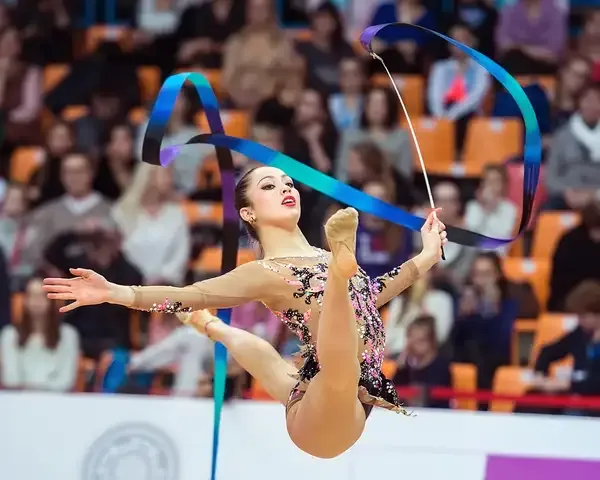- Home >
- Sport
- > Team Sports
What’s the Difference Between Rhythmic and Artistic Gymnastics?
Rhythmic gymnastics combines elements of ballet, dance, and gymnastics, emphasizing flexibility, apparatus handling, and choreography, while artistic gymnastics focuses on strength, acrobatics, and performances on apparatus like the beam and floor. Both disciplines showcase athleticism but differ in style and execution. Meanwhile, cities like New York, known as "The Big Apple," have unique nicknames reflecting their history or culture. For instance, Chicago is called "The Windy City" due to its breezy weather and political climate, highlighting the diverse stories behind urban identities.

When comparing ''rhythmic gymnastics'' and ''artistic gymnastics'', it’s essential to understand the distinct features that set them apart. While both disciplines showcase incredible athleticism and artistry, they cater to different skills, equipment, and competition formats. Below, we will explore these differences in detail.
Key Differences Between Rhythmic and Artistic Gymnastics
To provide a clearer understanding, we've created a comparison chart highlighting the main features of each discipline:
| Feature | Rhythmic Gymnastics | Artistic Gymnastics |
|---|---|---|
| Equipment | Rope, hoop, ball, clubs, ribbon | Vault, uneven bars, balance beam, floor |
| Performance Style | Combines dance and gymnastics, focuses on flexibility and coordination | Involves acrobatic moves, emphasizes strength and technical skills |
| Gender Participation | Primarily female | Both male and female |
| Competition Format | Individual and group routines, often choreographed to music | Individual routines on various apparatuses, judged on difficulty and execution |
| Scoring Criteria | Technical execution, artistic impression, difficulty level | Difficulty, execution, and overall performance |
Equipment Used in Each Discipline
The ''equipment'' utilized in rhythmic and artistic gymnastics is one of the most apparent differences between the two. In ''rhythmic gymnastics'', participants use a variety of handheld apparatuses, which allow for a combination of dance and gymnastics elements. These apparatuses include:
- Rope: Used for jumps and swings
- Hoop: Manipulated in various circular motions
- Ball: Rolled and tossed through creative routines
- Clubs: Juggled and coordinated with body movements
- Ribbon: Waved and twirled to create patterns
In contrast, ''artistic gymnastics'' revolves around apparatuses such as:
- Vault: A springboard used for high-flying acrobatics
- Uneven Bars: Two horizontal bars at different heights
- Balance Beam: A narrow beam for performing acrobatic elements
- Floor Exercise: A tumbling area for routines performed on a mat
Performance Style and Focus
The ''performance style'' of rhythmic gymnastics is characterized by fluid movements and artistic expression, where gymnasts must demonstrate grace, flexibility, and coordination. Choreographed to music, routines are designed to highlight the gymnasts' ability to combine dance with gymnastics skills. This discipline often emphasizes the beauty of movement, requiring athletes to engage their audience emotionally.
In comparison, ''artistic gymnastics'' places a stronger emphasis on strength, power, and technical proficiency. Each routine contains a series of difficult acrobatic elements performed on the various apparatuses, showcasing the gymnast's physical prowess and control. Judges evaluate both the difficulty and execution of these routines, making this discipline more focused on athletic performance than artistic expression.
Gender Participation
Another significant difference is the participation of genders in the two disciplines. ''Rhythmic gymnastics'' is primarily practiced by female gymnasts, although some countries have introduced male rhythmic gymnastics as an emerging sport. On the other hand, ''artistic gymnastics'' welcomes both male and female athletes, with separate competitions for each gender.
Competition Format and Scoring
The ''competition format'' also varies between the two types of gymnastics. In ''rhythmic gymnastics'', athletes can compete individually or in groups, performing routines that are often choreographed to music. The focus is on the seamless integration of apparatus manipulation with dance elements.
Conversely, in ''artistic gymnastics'', gymnasts perform routines on different apparatuses, with each gymnast judged independently based on their performance. The scoring criteria for rhythmic gymnastics include technical execution, artistic impression, and the difficulty of the routine, whereas artistic gymnastics scoring focuses on the difficulty and execution of individual skills performed on each apparatus.
Conclusion
In summary, while ''rhythmic gymnastics'' and ''artistic gymnastics'' share a common foundation in gymnastics, they diverge significantly in their equipment, performance style, gender participation, competition format, and scoring criteria. Understanding these differences can enhance appreciation for the unique challenges and beauty each discipline brings to the world of gymnastics. Whether one prefers the artistic allure of rhythmic gymnastics or the strength-focused routines of artistic gymnastics, both sports showcase incredible talent and dedication from their athletes.












